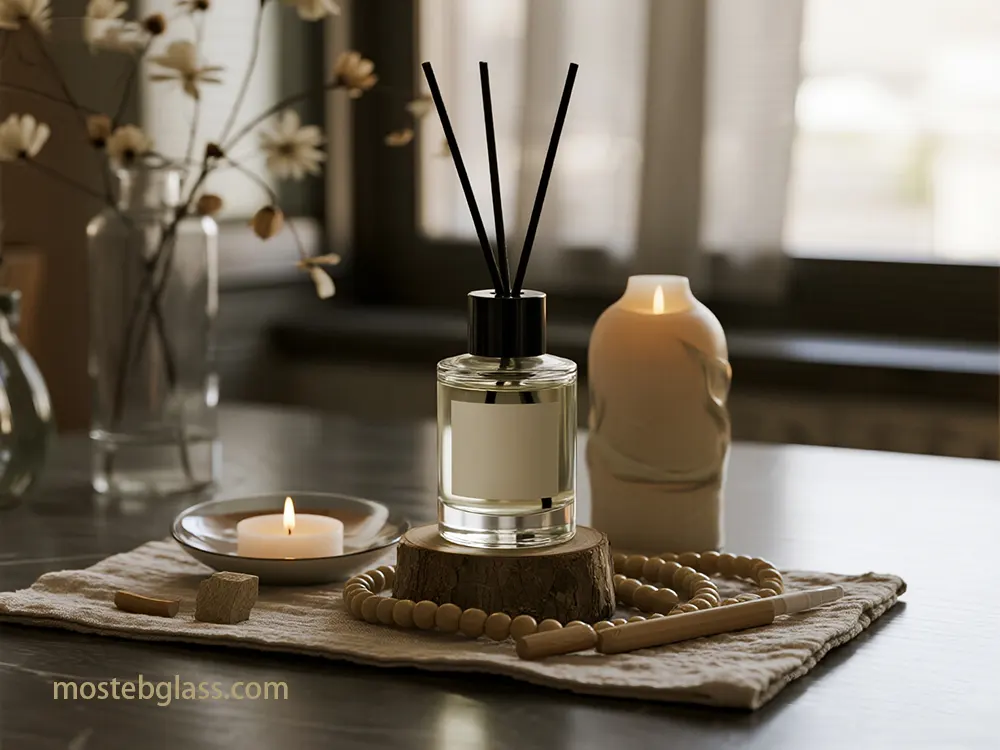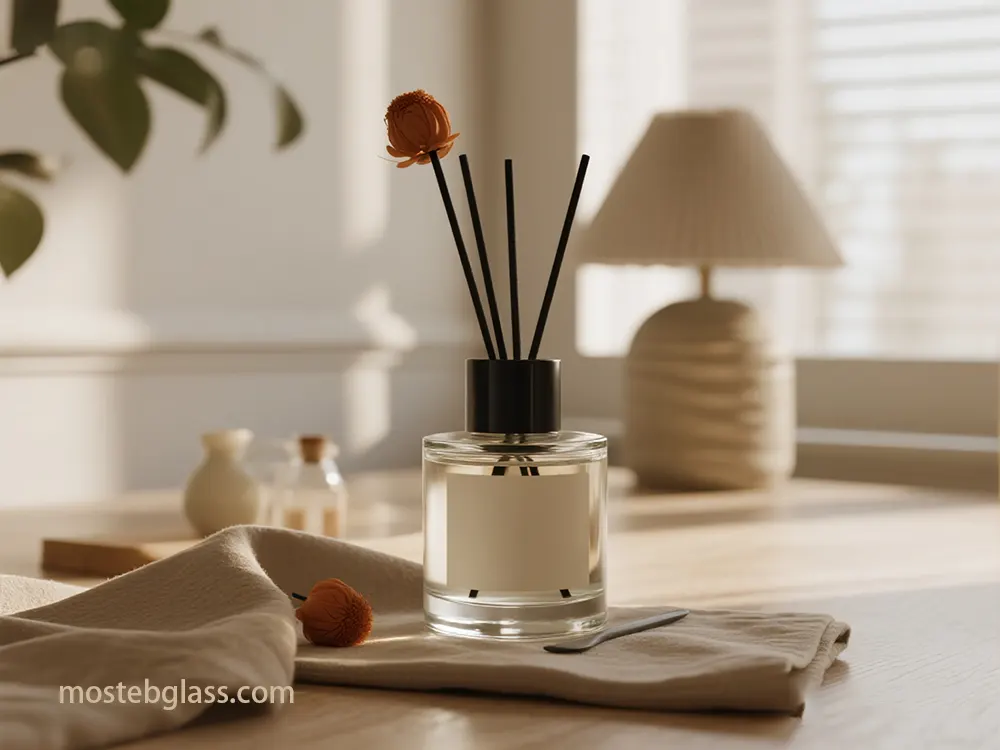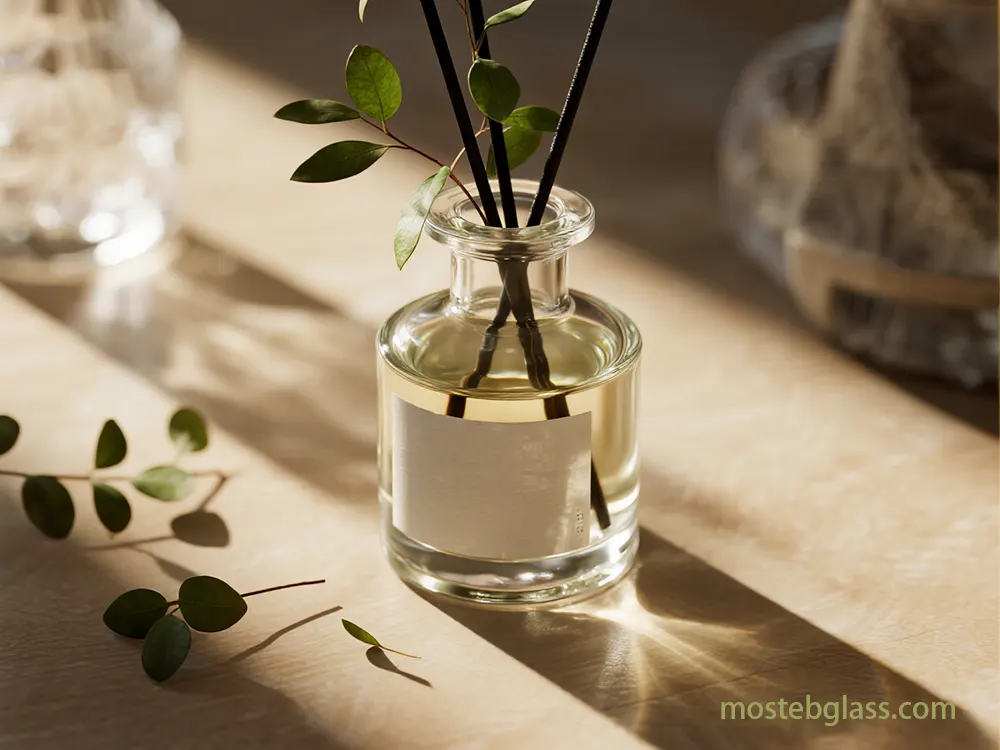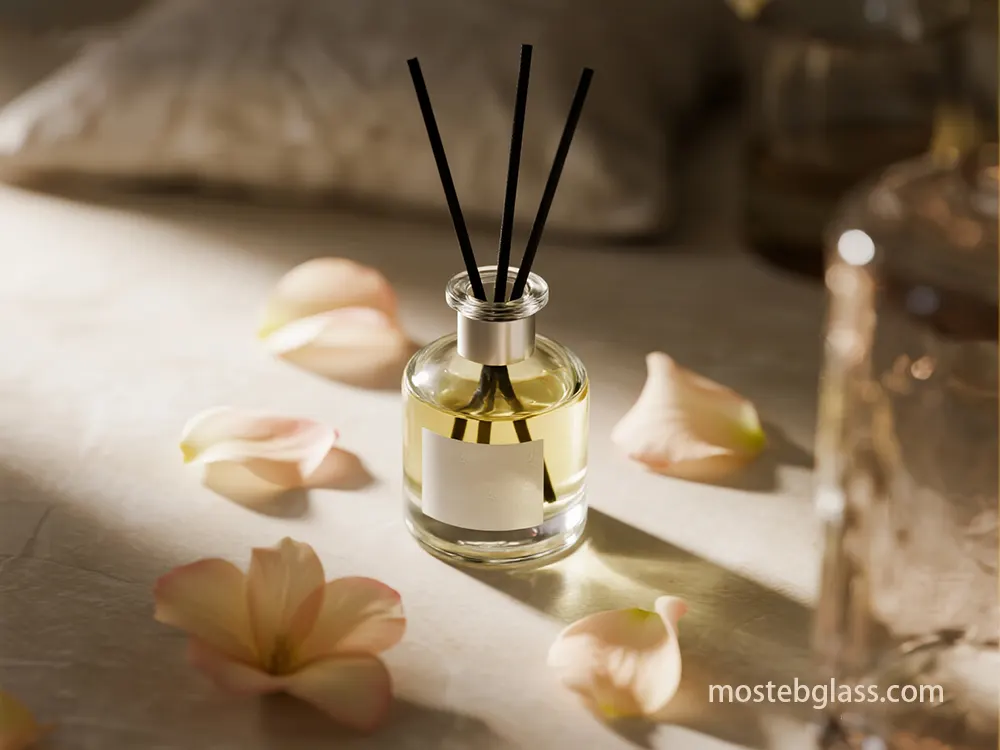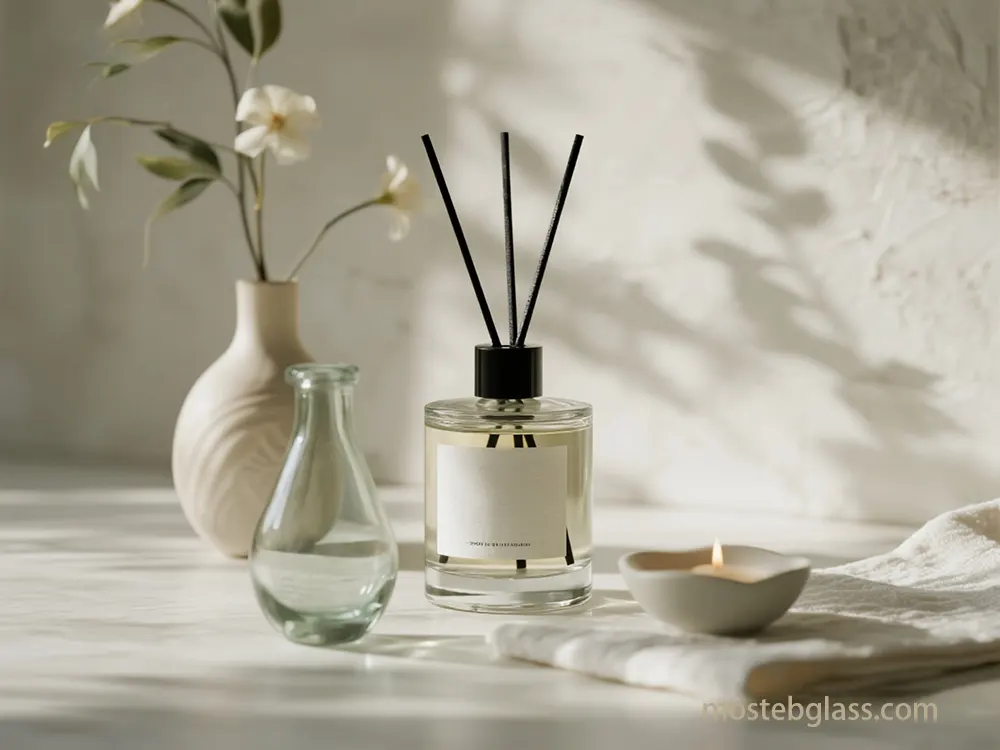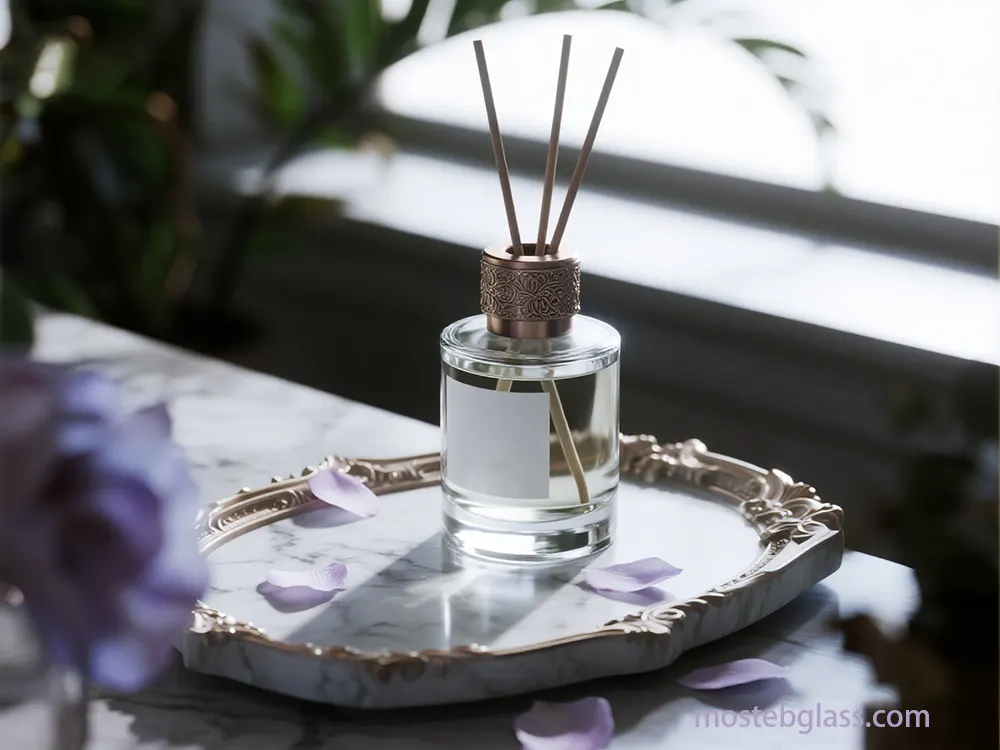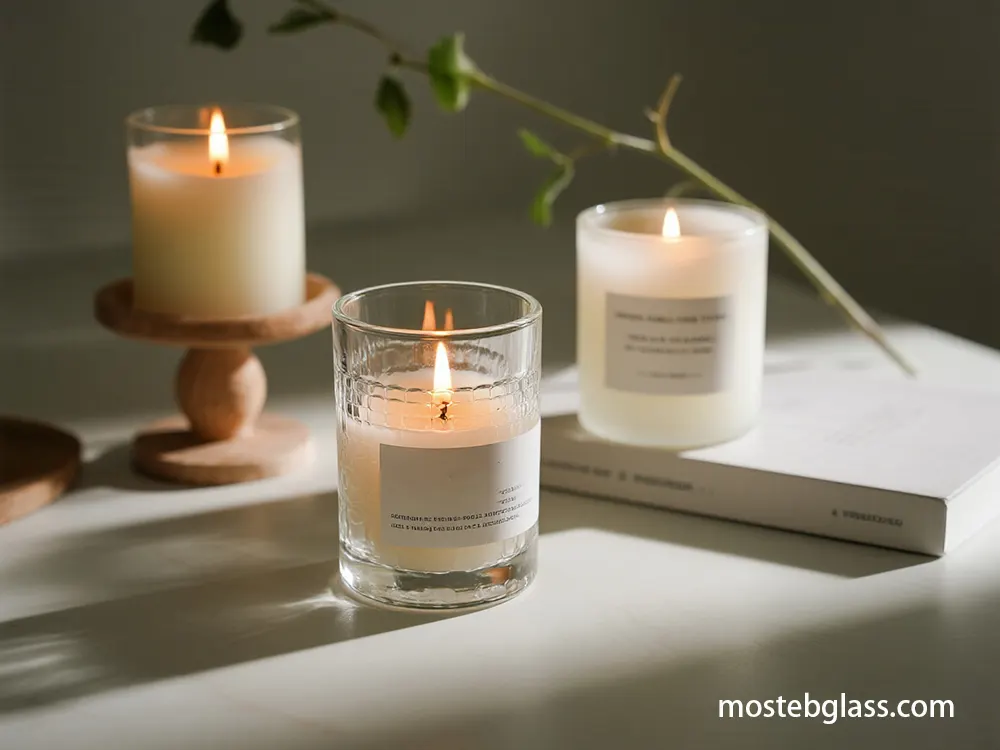2.1. 주요 비용 범주
원료:
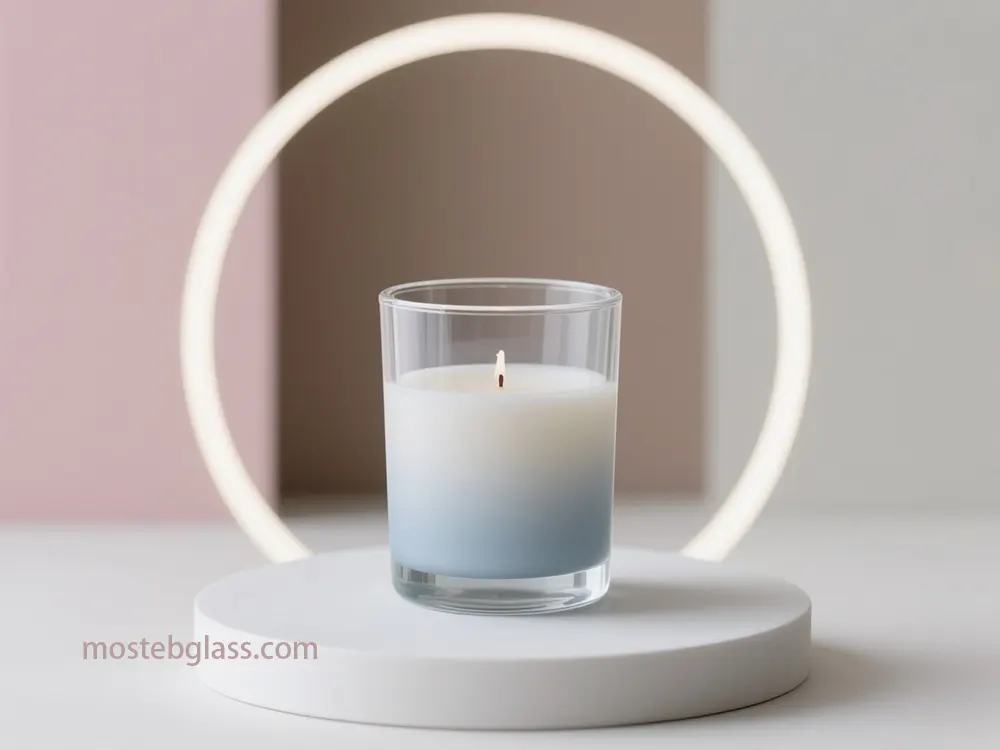
실리카 모래, 음료수, 석회석 및 상당한(재활용 유리) 구성 요소를 포함합니다. 유리 재킷에 중점을 둔 경우, 다른 조명 구성 요소(연료, 향, 주, 커버, 라벨)도 총 제품 비용에 기여합니다.
생산:
유리, 노동, 기계 유지보수 및 기능에는 녹여내기에 대한 에너지 소비가 포함되어 소요 비용이 발생합니다.
- 설계 및 도구: 맞춤 설계는 고유한 모형 곰팡이와 도구가 필요하며, 설계 복잡성에 직접적으로 영향을 미치는 충분한 사전 투자를 나타냅니다.
- 운송 및 물류: 공장에서 고객까지의 제품 운송 비용, 포장, 상품 및 국제 배송을 위한 관세를 포함합니다.
- 기타 소비 재료: 작은 공급은 반복 비용에 기여합니다.
- 2.2. 비협상 가능한 품질 속성 맞춤 유리 캔들 재킷, 특히 Mosteb과 같은 최상위 클래스 브랜드에 있어, 확실한 미세한 속성은 협상할 수 없으며 제품 안전성, 성능 및 상징적 신념에 영향을 미칩니다.
- 투명도: 유리는 불완전성, 거품 또는 변색을 없애기 위해 순수한 외관을 허용해야 하며, 캔들의 색상과 불꽃을 볼 수 있어야 합니다.
열 저항성:
재킷은 캔들 열로 인해 깨지거나 변형되지 않아야 합니다. 열 충격 테스트(예: ASTM C149)는 중요하며, 잘 회복된 유리는 큰 온도 변화에 견딜 수 있습니다.
- 내구성: 재킷은 운반, 채우기 및 운송 중 파손되지 않을 만큼 단단해야 하며, 충격 저항성과 내부 압력 저항성을 포함합니다.
- 아름다움의 일관성: 형태, 크기 및 장식 요소(예: 화장, 발라이팅, 인쇄)의 일관성은 브랜드 이미지에 중요합니다. 시각 검사 및 차원 평가는 일관성을 보장합니다.
- 회복 품질: 올바른 회복은 내부 스트레스를 제거하여 내구성과 열 저항성을 크게 향상시킵니다. 현대 공장은 정밀 레르스를 사용하여 냉각 속도를 제어하여 대부분의 내부 스트레스를 제거하고 충격 저항성을 높입니다.
- 3. 전략적 구매 및 공급망 적응 Strategic procurement and supply chain are important to reduce optimization costs, including careful supplier assessment, volume utilization and navigation of global business dynamics.
- 3.1. International versus national/regional suppliers Choices between international and domestic suppliers involve a complex cost analysis.
Cost difference:
Domestic glass often costs high costs due to advanced labor, energy and raw material costs, while imported glass can offer low starting costs.
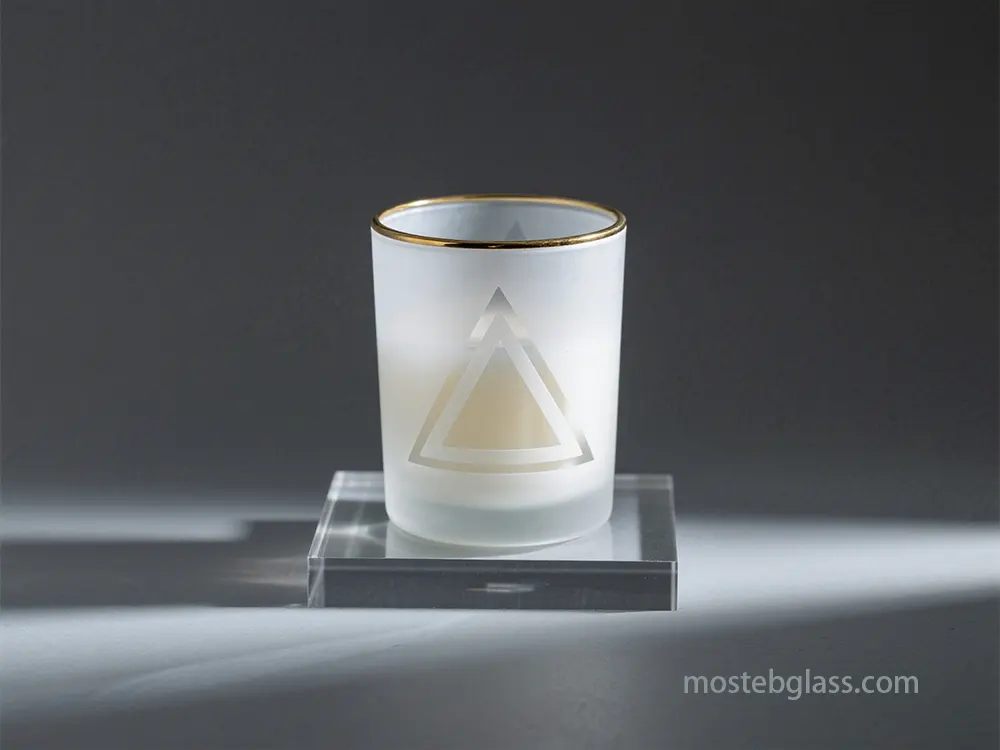
Quality and reliability:
North American glass often provides frequent quality, reliability and better customer service. Imported glass can show inconsistent quality and communication barriers despite low prices.
- Adaptation and collaboration: Domestic suppliers usually provide more innovative design and more adaptation, which is important for the unique customized jar.
- Ethical and environmental ideas: Choosing the North American team glass supports local economies, ensures moral work practices and reduces carbon footprints due to low consignment distance, also stimulates domestic recycling. Global shipping is less environmentally friendly.
- Tariffs and business stress: Geophysical factors such as tariff rates (eg 10%on the import of glass bottle since April 5, 2025) significantly affect import costs, which requires budget for additional expenses. USMCA Sami is required for 0% tariff from Canada or Mexico.
- 3.2. Leveraging Production Volumes for Negotiation Current or projected annual production volumes are a powerful negotiation tool.
- Bulk Purchasing: Buying raw materials in bulk significantly reduces per-unit costs and shipping expenses, potentially cutting packaging costs by up to 20%.
Shipping Consolidation:
Ordering multiple items or larger quantities at once minimizes the impact of shipping costs on unit cost. Bulk suppliers may offer reduced or free delivery for large orders.
- Long-Term Relationships: Building long-term supplier relationships can lead to improved credit terms, early access to new designs, and quicker service. Treating suppliers as strategic partners, sharing long-term plans, and involving them in innovation fosters stronger relationships.
- Supplier Evaluation: Beyond cost, criteria should include quality, service, design expertise, responsiveness, financial stability, production capacity, adherence to quality management systems (e.g., ISO 9001), environmental compliance, and ethical labor practices. Certifications like FDA approval, GMP, and ISO 15378 are crucial.
- 4. Production (DFM) and design for adaptation strategy Intelligent design options, directed by design, aimed at the principles, are crucial to reducing tools and production costs, and maintaining the beauty and functional adaptation required for customized glass candles.
- 4.1. DFM principles for glass jar Easy:
Losing the weight of the average glass container reduces the use of raw materials and reduces transit emissions by offering significant cost savings.
Adapted glass distribution:
The NNPB process for narrow neck pressure (NNPB) ensures the thickness of a uniform wall, and improves the significant, quality and productivity to be mild without compromising on the current.
- 4.2. Material Use customization Recycled material:
- Design should adapt to the use of recycled glass (cullet), reduce the cost of raw materials and significantly reduce energy consumption (up to 50%) and reduce CO2 emissions. Alternative raw materials:
The glass industry examines alternative ingredients with low carbon to reduce environmental footprints and potential costs.
- Standardization of elements: While custom jars are unique, strategic standardization of certain elements can lead to a sufficient cost reduction.
- Hals Finnish: Standardization allows neck finish for lids outside the shelf, which allows customized tools and simplification of inventory.
- Aadhaar Design: A standardized base simplifies mold changes and reduces production complexity.
- General dimensions: Designing in general machine functions avoids expensive reconstruction.
- Standardization for recycling: Sorting standardization design, collection and reuse, reduces costs in broad recycling ecosystems.
- Tulling Cost reduction: Modular mold design, where only specific sections are customized, the CO -CUM tool is significantly reduced.
- 5.Production process capacity and scale economies Custom glass jars are important for adaptation cost reduction of the production process, especially by taking advantage of the production versions to achieve sufficient economies on the scale. The estimated growth of the global glass production market indicates strong requirements and opportunities for efficient production.
- 5.1. Important strategies for process efficiency 5.1.1. Reduction in energy consumption
Cullet User:
Cullet involving the coal significantly reduces the cost of raw materials and can reduce the use of energy by up to 50%by protecting CO2 emissions.
Energy efficiency program:
Comprehensive programs can reduce operating costs by 15-20% through energy -efficient technologies and customized oven operations. The industry invests in decarbonization projects.
- Automation and Smart Production (Industry 4.0): Advanced machine learning and AI: Integration leads to more efficient and control -gang glass production, which reduces waste and human errors.
- Digital technologies: Industrial IoT, Cloud Computing and Big Data Productions are able to improve intelligence, automation and flexibility, efficiency and quality.
- Automatic quality control:Sophisticated systems accurate control control procedures. Automatic defects that detect systems capture real -time defects, save production time and reduce CO2. Machine vision systems with AI detect defects such as cracks, bubbles or deformities, even subtle people capture 360-degree ideas.
- Robotics: Robotics can handle content, change mold and package, reduce labor costs and increase accurately.
- Equipment with high demstration: The use of altitude demonstration units reduces energy consumption and improves efficiency, which enables high -speed production.
- 5.1.2. To get the economies on the scale Increase in production volume:
- A certain cost spread in units with higher volumes significantly reduces production costs per unit. Purchase of bulk raw materials:
Large orders reduce the conditions for costs and better interaction.
- Custom production runs: Long, uninterrupted races for specific designs, to maximize the use of the machine, reduce the change time.
- Reduced waste: The high amount of accurate procedure allows for control, the material reduces waste and reunion.
- Investment in advanced technologies: The cost of advanced technologies (AI, automation) is appropriate and is quickly refined with high production versions, leading to more long -term savings.
- By implementing these possibilities and taking advantage of the scale on the scale, glass light manufacturers can significantly reduce costs per unit without compromising the quality of premium products such as Mosteb. 6. Logistics, Packaging, and Distribution Cost Reduction
- Optimizing logistics, packaging, and distribution is vital for minimizing shipping and handling costs for fragile glass merchandise. This consists of progressive packaging, strategic network optimization, and careful attention of global sourcing. 6.1. Innovative Packaging Design
Understanding Fragility:
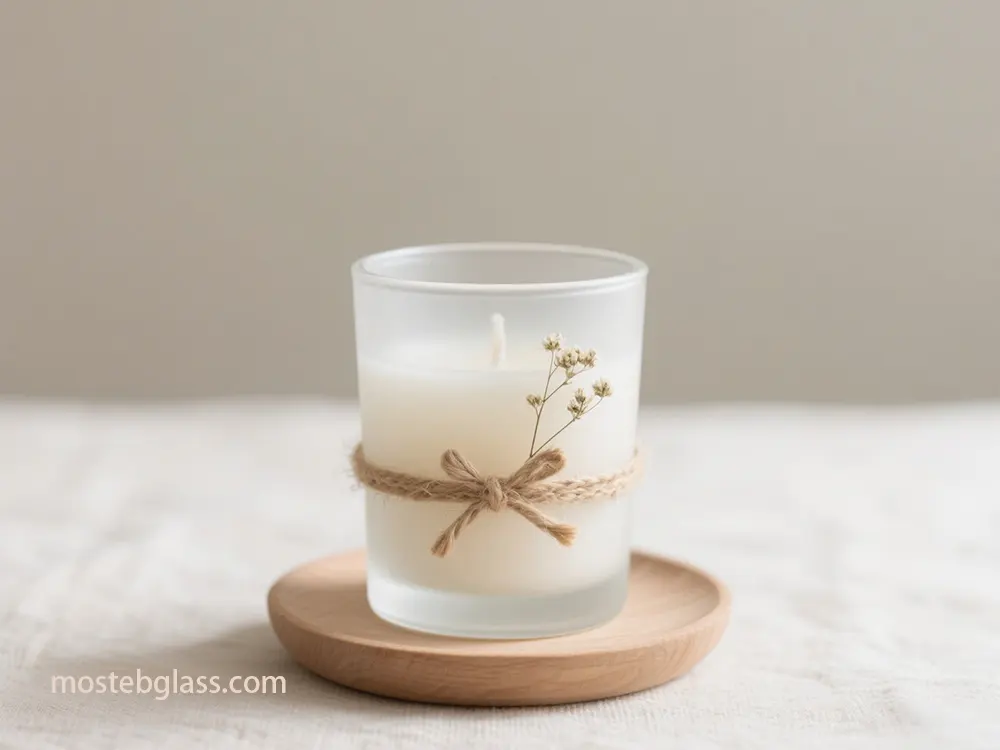
Fragile gadgets are susceptible to effect, vibration, and temperature fluctuations.
Material Selection:
Crucial substances encompass bubble wrap, foam inserts, and air pillows for cushioning, and strong corrugated cardboard boxes for safety.
- Customization: Tailoring packaging to unique jar dimensions and fragility is paramount.
- Double-Boxing: For fragile items, double-boxing gives an extra layer of safety with a buffer region.
- Reinforcing Weak Points: Adding extra padding or nook protectors to corners and edges enhances protection by way of dispensing strain.
- Securing Items & Void Fill: Preventing motion inside the container is important. Packaging peanuts, air cushions, or crumpled paper fill voids. Dividers and inserts separate individual pieces.
- Individual Wrapping: Each glass item should be in my opinion wrapped with cushioning materials like bubble wrap.
- Weight Distribution: Place heavier items at the lowest for balance.
- Sealing and Reinforcement: Boxes must be securely sealed with sturdy packing tape, reinforcing all seams.
- Cleaning and Inspection: Products need to be wiped clean and inspected for omitted cracks before packing.
- ISTA Certification: Investing in ISTA-certified corrugated boxes guarantees robustness for shipping demanding situations.
- 6.2. Optimized Logistics Networks & Strategic Distribution Clear Labeling:
- Prominently labeling programs as “fragile” and “handle with care” indicators handlers. Just-in-Time (JIT) Inventory:
JIT optimizes inventory stages, decreasing greater stock and warehousing charges.
- Technology Integration: IoT-enabled devices, GPS tracking, automation, and predictive analytics provide actual-time visibility, enabling statistics-driven selection-making and course optimization.
- Supply Chain Integration: Close collaboration amongst manufacturers, vendors, and vendors guarantees easy cloth drift.
- Total Quality Management (TQM): Implementing TQM, a established method for non-stop improvement in packaging, shipping, and managing, makes use of facts to reduce damage.
- Standardized Procedures: Clear, standardized delivery approaches lessen human errors, enhance coordination, and increase accountability.
- Impact Indicators: Shock indicators discover excessive effect forces at some point of transit, alerting to mishandling.
- 6.3. Implications of International Sourcing on Logistics Costs Increased Transit Times:
- Longer transit times tie up capital and increase damage/put off risks. Customs and Duties:
Tariffs (e.G., 10% baseline tariff on glass bottle imports) and customs obligations upload at once to landed prices.
- Complex Documentation: International shipments require sizeable documentation, increasing administrative overhead.
- Higher Insurance Costs: Increased risk from longer transit and a couple of managing points often translates to higher insurance charges.
- Carbon Footprint: Longer shipping distances contribute to a better carbon footprint, probably impacting logo picture or incurring carbon taxes.
- By meticulously planning packaging, leveraging generation for logistics, and thoroughly weighing worldwide as opposed to home sourcing, glass candle jar producers can notably lessen distribution charges whilst making sure safe delivery for manufacturers like Mosteb. 7. Conclusion
- In end, reducing production costs for custom glass candle jars whilst upholding uncompromising nice needs a holistic and strategic technique that spans each level of the manufacturing and supply chain lifecycle.By precisely identifying middle charge classes—from uncooked materials and manufacturing to format, tooling, and logistics—and aligning them with non-negotiable incredible attributes like clarity, warm temperature resistance, durability, and aesthetic consistency, manufacturers along with Mosteb can put into effect centered optimizations. Strategic procurement practices, including careful evaluation of domestic rather than global suppliers, leveraging bulk buying strength, and fostering long-term supplier partnerships, form a foundational layer for cost financial savings, balancing fee performance with reliability, ethical requirements, and environmental obligation. Complementing this, design for manufacturability (DFM) principles—including lightweighting, cloth customization with recycled glass, standardization of key factors, and modular mildew layout—lessen tooling and production charges without sacrificing design specialty. Enhancing manufacturing performance thru energy-saving measures, automation, clever manufacturing technology, and scaling operations to reap economies of scale in addition drives down in step with-unit charges whilst preserving pleasant manipulate. Finally, optimizing logistics and distribution thru innovative packaging, era-pushed community management, and considerate attention of worldwide versus home sourcing minimizes shipping risks and expenses. Together, those included techniques empower glass candle jar producers to enhance profitability, make stronger competitive positioning, and supply top rate merchandise that meet both logo requirements and market needs, making sure sustainable fulfillment in a dynamic enterprise panorama. 더 긴 배송 거리는 좋은 탄소 발자국에 기여하며, 아마 로고 이미지에 영향을 미치거나 탄소 세금을 부과할 수 있습니다.
정밀하게 포장을 계획하고 물류를 위한 세대를 활용하며, 전 세계적으로 대비하여 국내 조달을 철저히 고려함으로써 유리 캔들 재킷 생산자들은 배송 비용을 눈에 띄게 줄이면서도 Mosteb과 같은 제조업체의 안전한 배송을 확보할 수 있습니다.
7. 결론
결론적으로, 맞춤형 유리 캔들 재킷의 생산 비용을 줄이면서도 뛰어난 요구 사항을 유지하기 위해 전체적인 제조 및 공급망 생애주기의 각 단계에 걸쳐 전략적인 접근 방식이 필요합니다. 정확하게 중간 비용 그룹을 식별하십시오 - 원료 및 제조부터 형식, 도구, 물류까지 - 그리고 그것들을 투기 불가능한 뛰어난 특성과 정렬하십시오, 예를 들어 투명성, 온도 저항성, 내구성 및 미적 일관성. Mosteb과 같은 제조업체는 이러한 중심 최적화를 실시할 수 있습니다. 전략적인 구매 관행, 국내 공급업체보다 글로벌 공급업체를 신중하게 평가하는 것을 포함하여, 대량 구매의 힘을 활용하고 장기 공급업체 파트너십을 촉진하는 것은 비용 절감의 기초 계층을 형성하며, 비용 성능을 신뢰성, 윤리적 요구 사항 및 환경적 책임과 균형을 맞춥니다. 이를 보완하며, 제조의 용이성(DFM) 원칙 - 경량화, 재활용 유리로의 천연물 맞춤 설정, 핵심 요소의 표준화 및 모듈식 라이트 모델 설계 - 도구 및 생산 비용을 희생하지 않고 디자인 전문성을 침식하지 않고 줄입니다. 에너지 절약 조치, 자동화, 지능형 제조 기술을 통해 제조 성능을 향상시키고 운영을 확장하여 경제 규모를 얻는 것은 단위 비용을 낮추면서도 품질 관리를 유지합니다. 마지막으로, 혁신적인 포장을 통해 로그 기술을 주도한 네트워크 관리와 국제 대비 국내 조달에 신중하게 주의를 기울여 물류와 배송을 최적화함으로써 운송 위험과 비용을 최소화합니다. 이러한 포함된 기술은 유리 캔들 재킷 제조업체가 수익성을 향상시키고 경쟁력 있는 위치를 강화하며 브랜드 요구 사항과 시장 요구 사항을 모두 충족하는 최상의 제품을 제공할 수 있도록 돕습니다. 이는 동적 비즈니스 풍경에서 지속 가능한 성공을 보장합니다.




